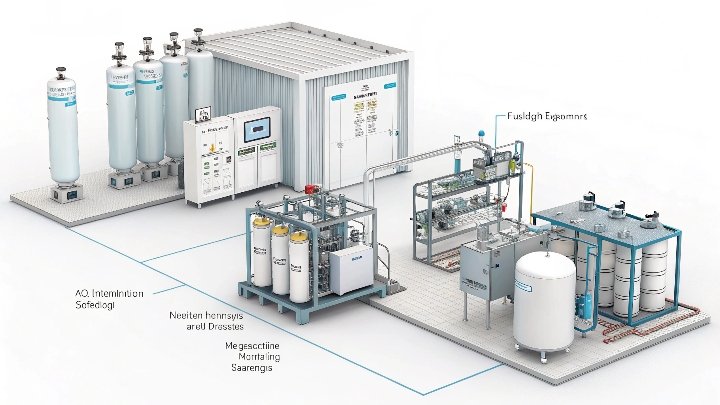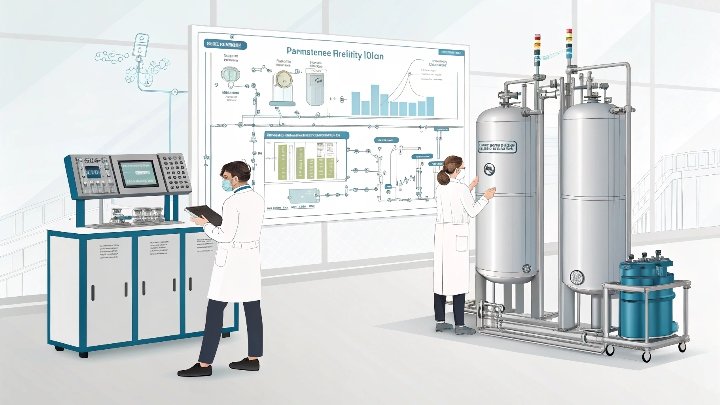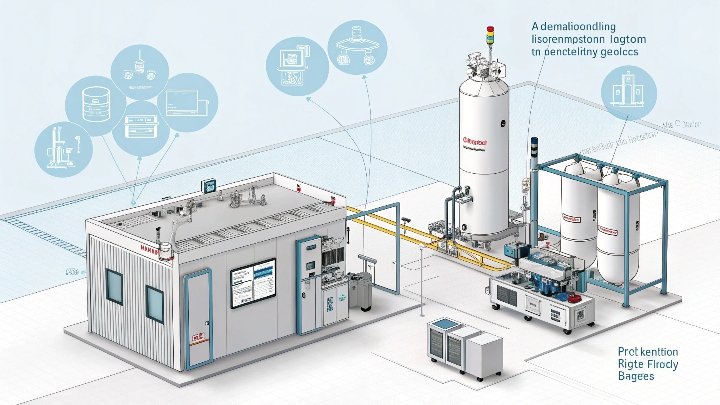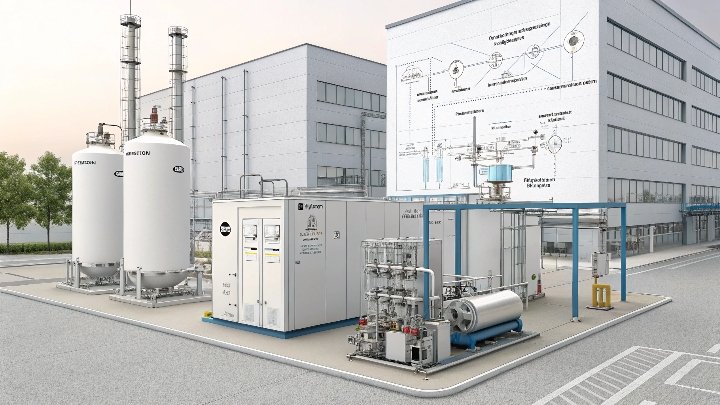I once faced frustrating setbacks with gas purity and high costs. I worried about losing business. Then I discovered 13X molecular sieves and found a remarkable way forward.
I believe 13X molecular sieves provide an excellent way to remove impurities and achieve high gas purity. They are known for robust pore structure, large surface area, and reliable adsorption capacity. They address dehydration, desulfurization, and selective separation. They help many industries get consistent and economical gas purification.
I find 13X molecular sieves truly remarkable. They tackle different problems in natural gas treatment, air separation, and pollution control. I want to share what I learned and show how these sieves transform many industries with effective, consistent, and safe gas purification.
Natural Gas Purification: Efficient Desulfurization and Dehydration with 13X Molecular Sieves?
I once lost a major project due to sulfur-related corrosion. That moment made me focus on 13X sieves. I wanted a reliable solution to protect pipelines and bottom lines.
13X sieves absorb moisture and remove sulfur compounds from natural gas. They minimize damage and keep gas streams clean. They help produce stable output and reduce maintenance costs. They are key to safer and more profitable operations.
I have seen how corrosive sulfur compounds can ruin pipelines and valves. They can also create safety hazards. I used to worry about unplanned shutdowns and expensive repairs. 13X molecular sieves address these issues by selectively adsorbing hydrogen sulfide and other sulfur pollutants. That step lowers corrosion risk and extends equipment life. This also stops unpleasant odors and pollution concerns.
I appreciate the flexibility of 13X molecular sieves. Their pore structure and surface chemistry target water and sulfur molecules. That means I can combine dehydration and desulfurization in a single adsorption bed. It reduces operational complexity and lowers energy costs. When I run gas streams through these sieves, I can maintain stable process conditions and reduce acid gas formation. This helps me produce cleaner, safer natural gas.
I also track performance with key parameters. I watch inlet gas composition, temperature, and pressure. 13X sieves work best within a recommended range, so I follow that. I focus on proper regeneration cycles. Timely regeneration helps me keep the sieve active. That lowers total ownership costs.
Below is a quick table that shows some important factors for natural gas treatment:
| Parameter | Impact on Natural Gas Purification |
|---|---|
| Sulfur Content | Affects corrosion potential and odor issues |
| Moisture Level | Influences hydrate formation and pipeline safety |
| Adsorption Temperature | Drives molecular sieve efficiency |
| Regeneration Time | Determines adsorbent longevity and overall cost |
With these guidelines, I have seen improved gas quality and fewer operational surprises. 13X molecular sieves make my natural gas purification steps simpler and more secure.
Air Separation: 13X Molecular Sieves Enable High-Purity Oxygen and Nitrogen Production?
I once struggled with low oxygen purity in a medical gas project. That threatened patient safety and my reputation. Then 13X sieves helped me separate the right gases effectively.
13X sieves selectively adsorb nitrogen or other molecules, leaving higher-purity oxygen or nitrogen. They help produce precise gas streams for hospitals, laboratories, and industrial processes. That improves safety, meets compliance, and reduces production costs. They are a proven choice for efficient air separation.
I have worked on air separation units where oxygen purity is vital for patient care. I remember a time when inconsistent nitrogen removal caused big problems for a hospital supply contract. 13X molecular sieves solved that issue. They can target nitrogen molecules and let the oxygen pass through at higher concentration. That gives more stable product quality and meets strict guidelines.
Pressure Swing Adsorption
In a typical PSA system, I compress air and pass it through a 13X adsorption bed. The sieve traps nitrogen and some other impurities. Then I reduce pressure, which releases the adsorbed gas. This step regenerates the sieve. I can cycle between columns to ensure continuous gas flow. This approach simplifies operations, lowers energy consumption, and eliminates the need for complicated cryogenic units.
Vacuum Swing Adsorption
Sometimes I use VSA technology to improve efficiency. Instead of only dropping the pressure to atmospheric levels, I apply a vacuum to pull out the adsorbed gases more completely. That leads to higher purity oxygen, but I must watch my capital costs and the power needed for vacuum pumps.
Below is a summary table of some important operating conditions in air separation:
| Condition | Why It Matters |
|---|---|
| Pressure | Impacts adsorption performance and cycle design |
| Temperature | Influences adsorbent capacity and selectivity |
| Cycle Time | Affects oxygen or nitrogen purity levels |
| Vacuum Level (VSA) | Determines desorption efficiency and purity |
With the right balance of pressure, temperature, and cycle times, 13X molecular sieves help me deliver consistent high-purity oxygen or nitrogen. I have gained more confidence in my processes, and I have improved satisfaction among clients who rely on stable gas supplies.
Environmental Applications: Breakthroughs in Gas Purification and Pollutant Capture with 13X Molecular Sieves?
I faced pressure when emission standards tightened. I realized I needed a new way to capture pollutants. I chose 13X sieves to address rising environmental demands.
13X molecular sieves play a strong role in controlling harmful gases. They adsorb CO2, VOCs, and other pollutants. They help reduce carbon footprints and meet regulations. They also provide a reliable method for companies to capture and reuse valuable compounds. They are a true breakthrough in environmental care.
I have worked on projects where carbon dioxide and volatile organic compounds threatened compliance with stricter emission rules. I remember a facility that emitted high levels of CO2. That put their permit at risk. I suggested 13X molecular sieves as a cost-effective solution. With their strong adsorption affinity, these sieves can trap large amounts of CO2. Then we regenerate them to release and capture that CO2 stream for reuse or safe disposal.
CO2 Capture
I focus on feed gas composition, temperature, and flow rates. 13X sieves work best when I monitor regeneration carefully. Excess heat can degrade the adsorbent. Controlled conditions keep the process efficient. When I capture CO2, I help facilities reduce their carbon footprint. That can earn carbon credits and improve public image. This approach also allows potential utilization of CO2 in other processes, such as enhanced oil recovery.
VOC Removal
I also use 13X sieves to remove VOCs from industrial exhaust. VOCs can cause smog and health risks. The sieves’ micropores selectively adsorb these compounds, reducing harmful emissions. I track the concentration of VOCs before and after treatment. That helps me verify compliance and measure cost savings from minimized fines.
Below is a table showing some environmental pollutants and how 13X sieves handle them:
| Pollutant | Adsorption Benefit |
|---|---|
| CO2 | Lowers greenhouse gas emissions |
| VOCs | Reduces smog and health hazards |
| SOx/NOx | Lowers acid rain precursors |
| Odorous Gases | Improves air quality and facility safety |
With these capabilities, I trust 13X molecular sieves for consistent pollutant capture. I meet regulations and uphold environmental standards. I also see real economic benefits, because efficient adsorption helps me reuse or dispose of pollutants in a responsible way.
Conclusion
13X molecular sieves give me a versatile, efficient path to high-purity gas and reliable pollutant capture. I trust their performance to transform natural gas, air separation, and environmental management.






